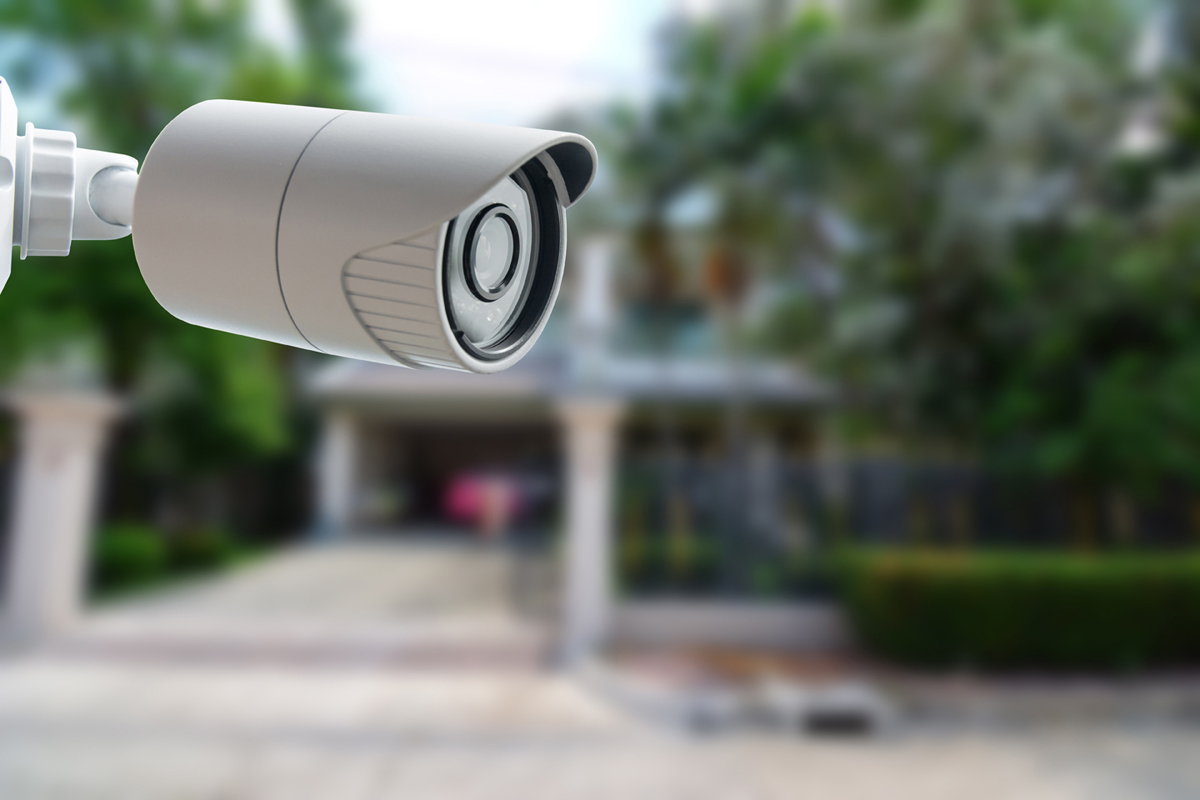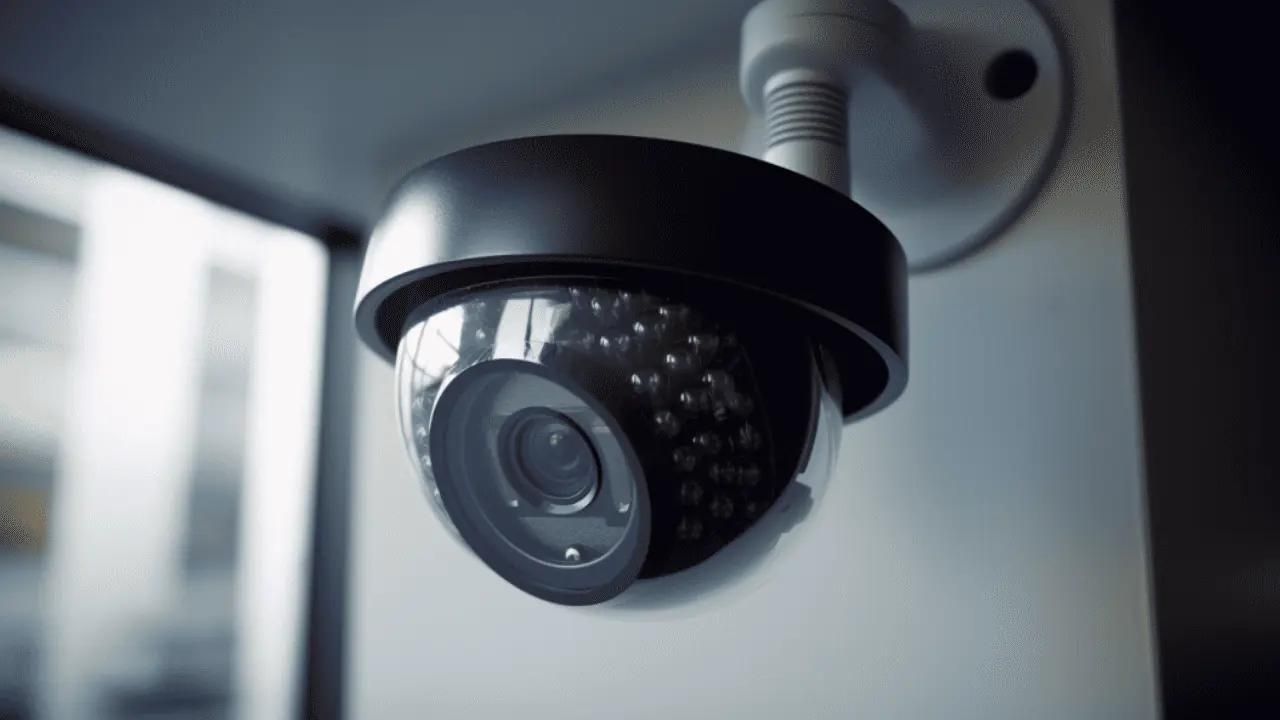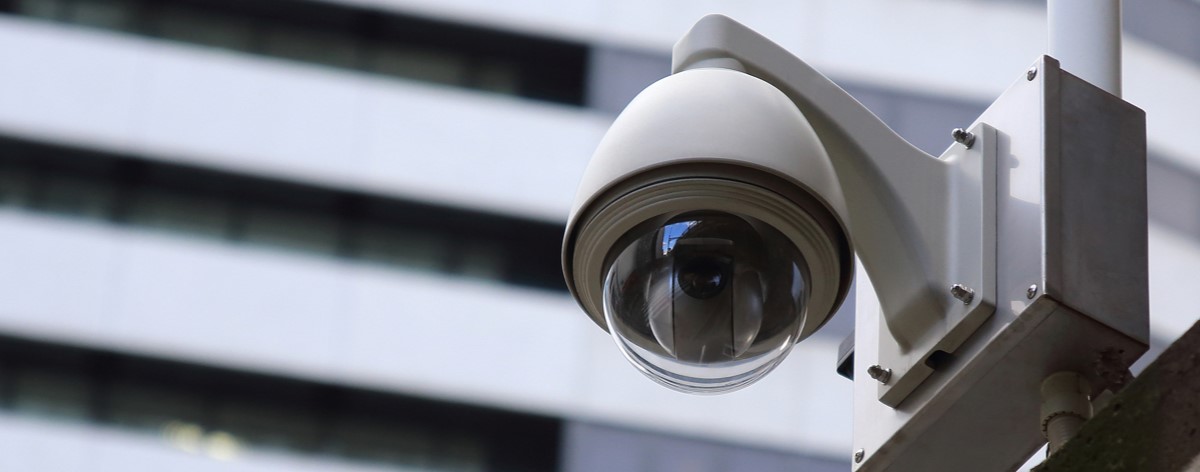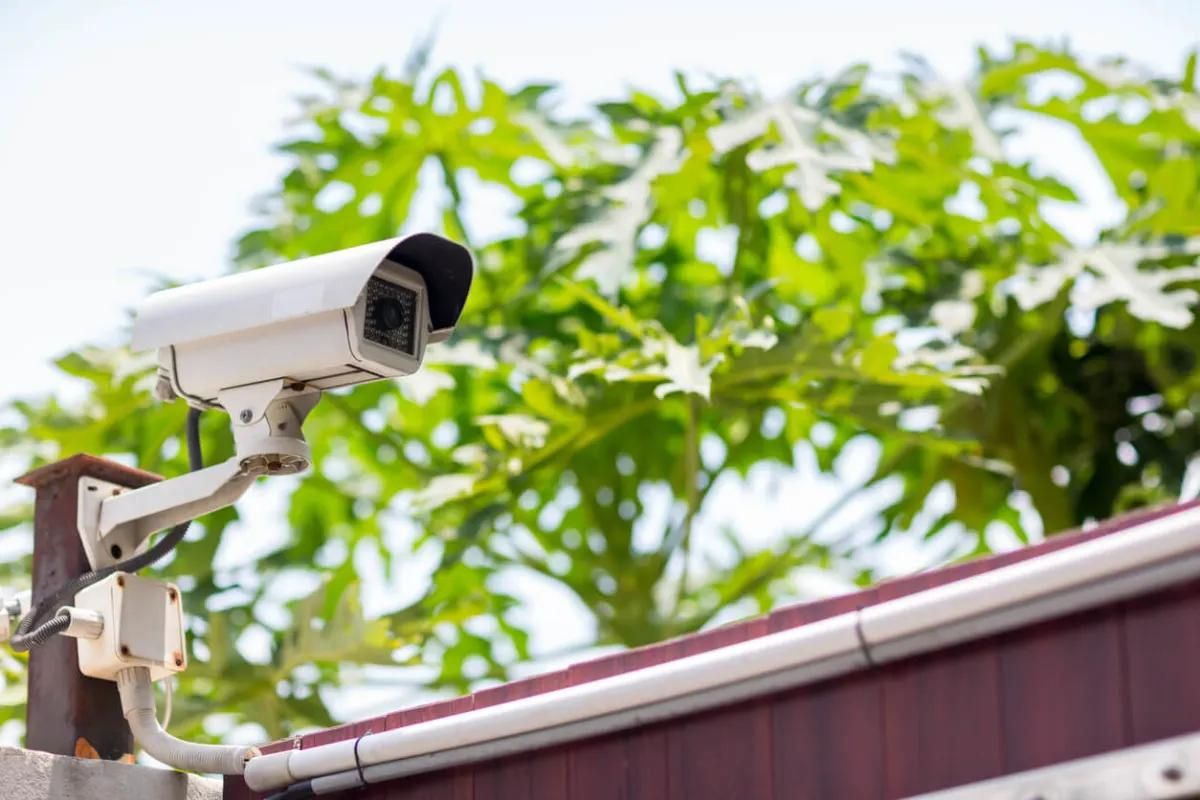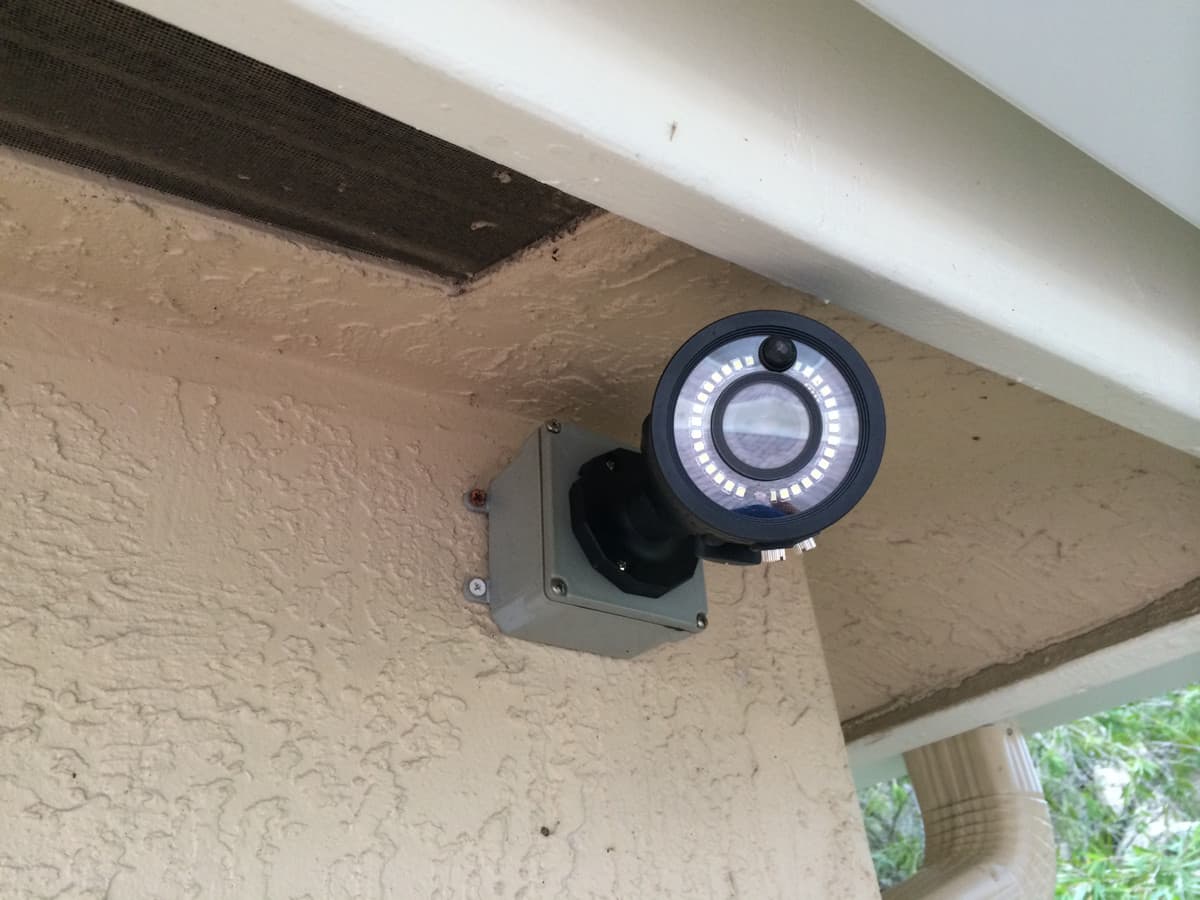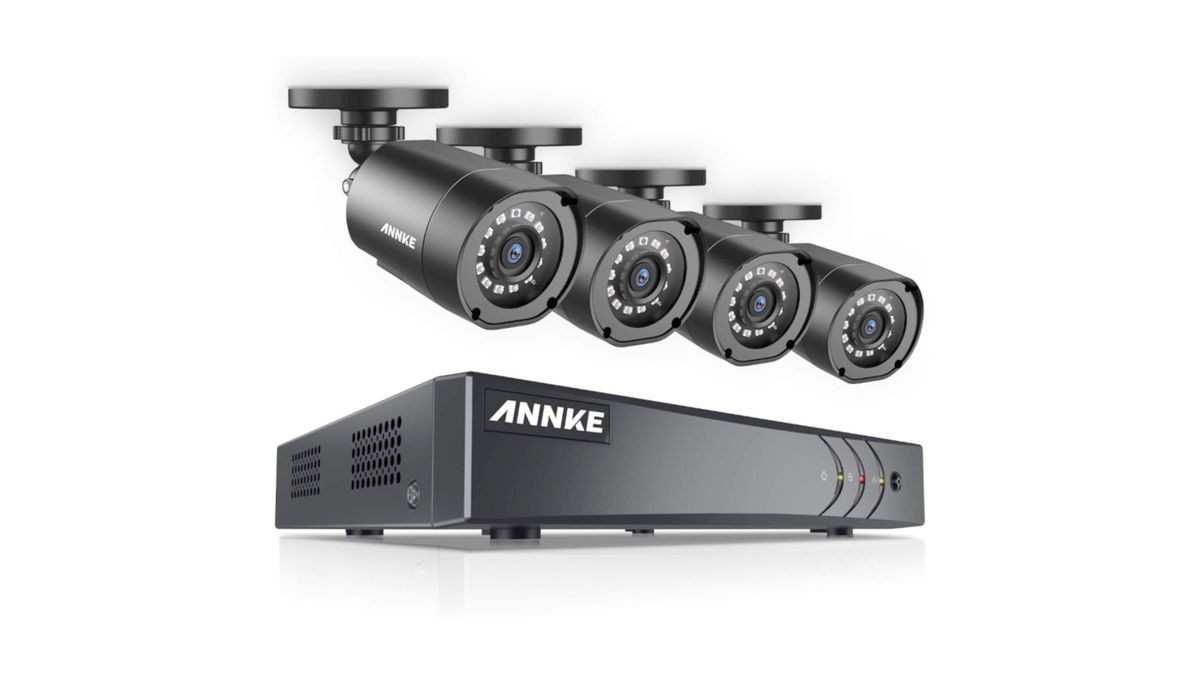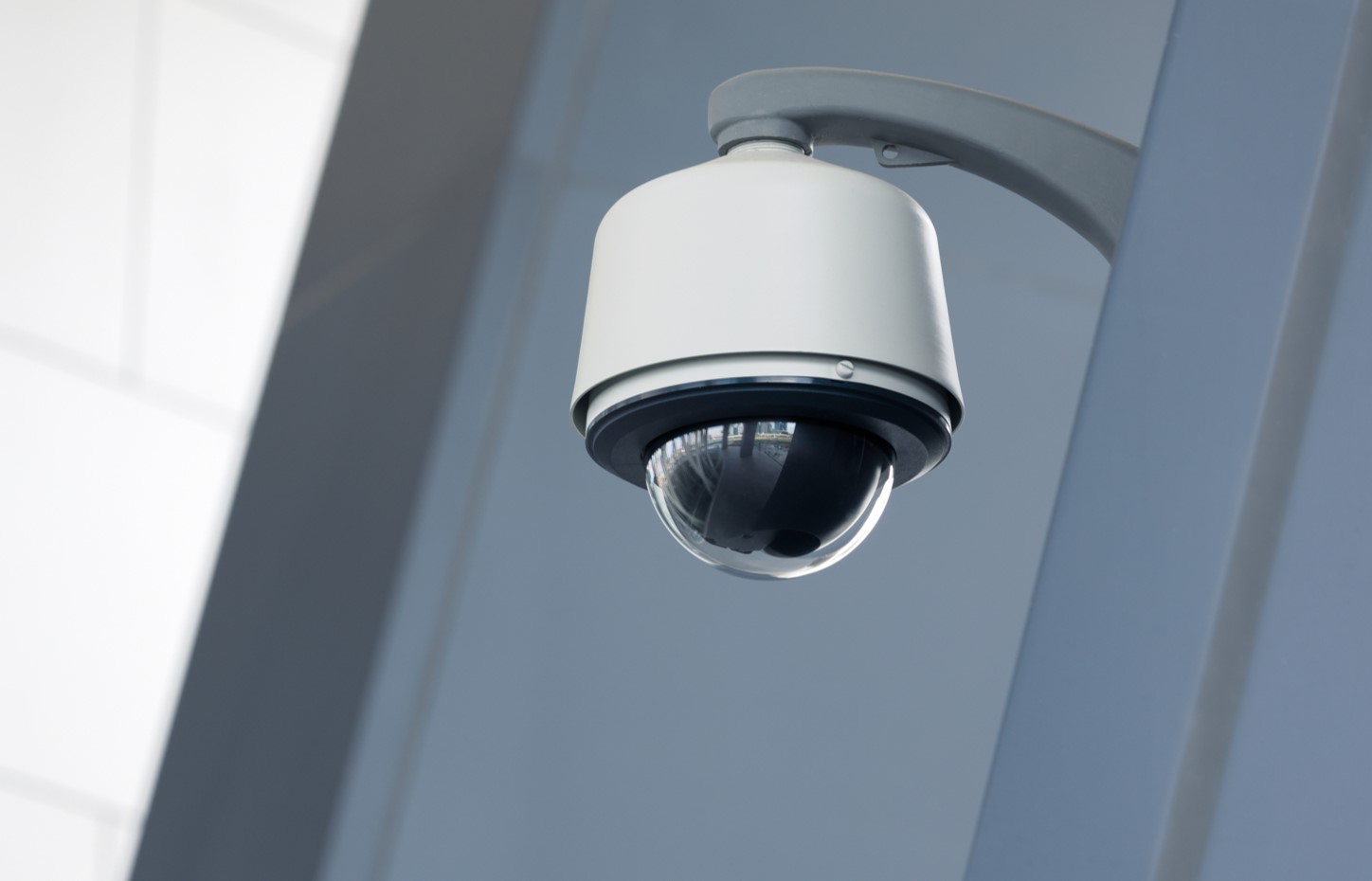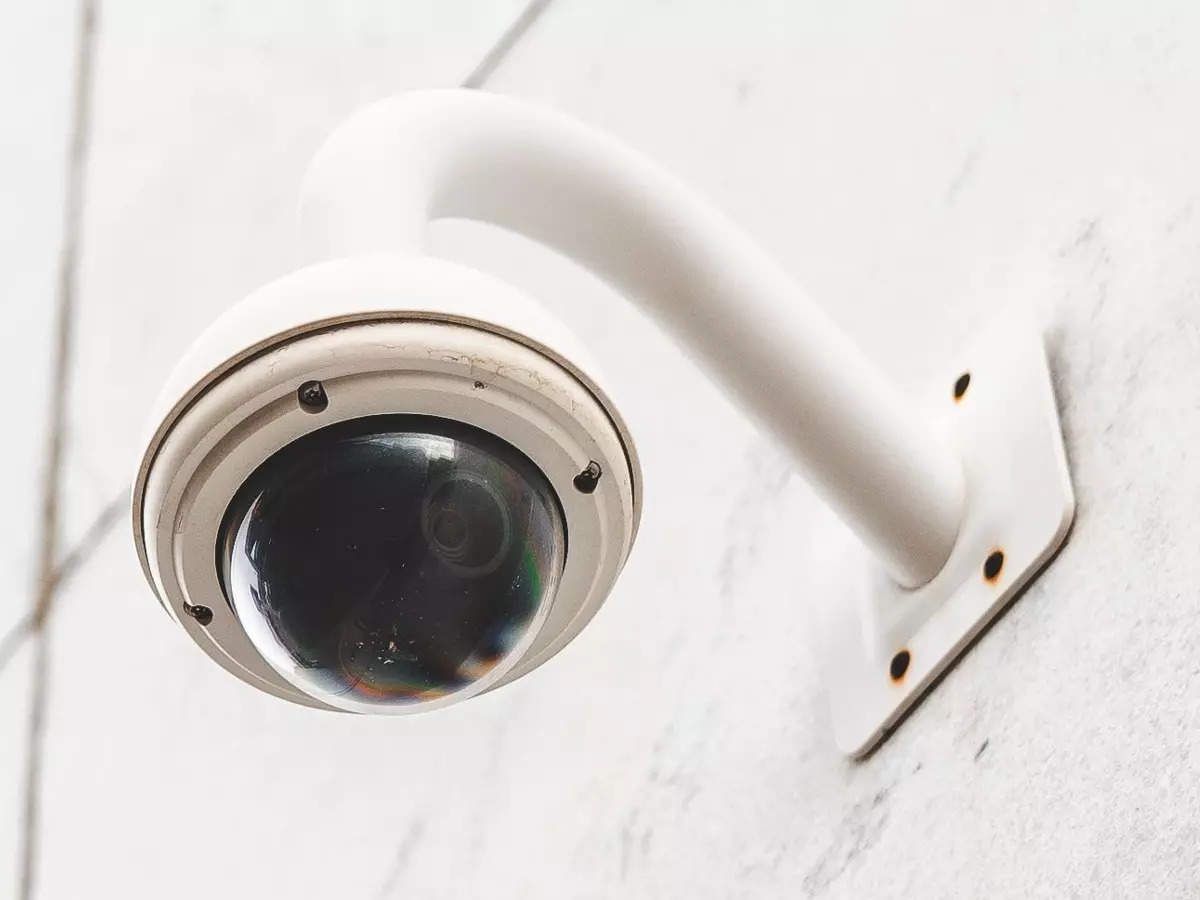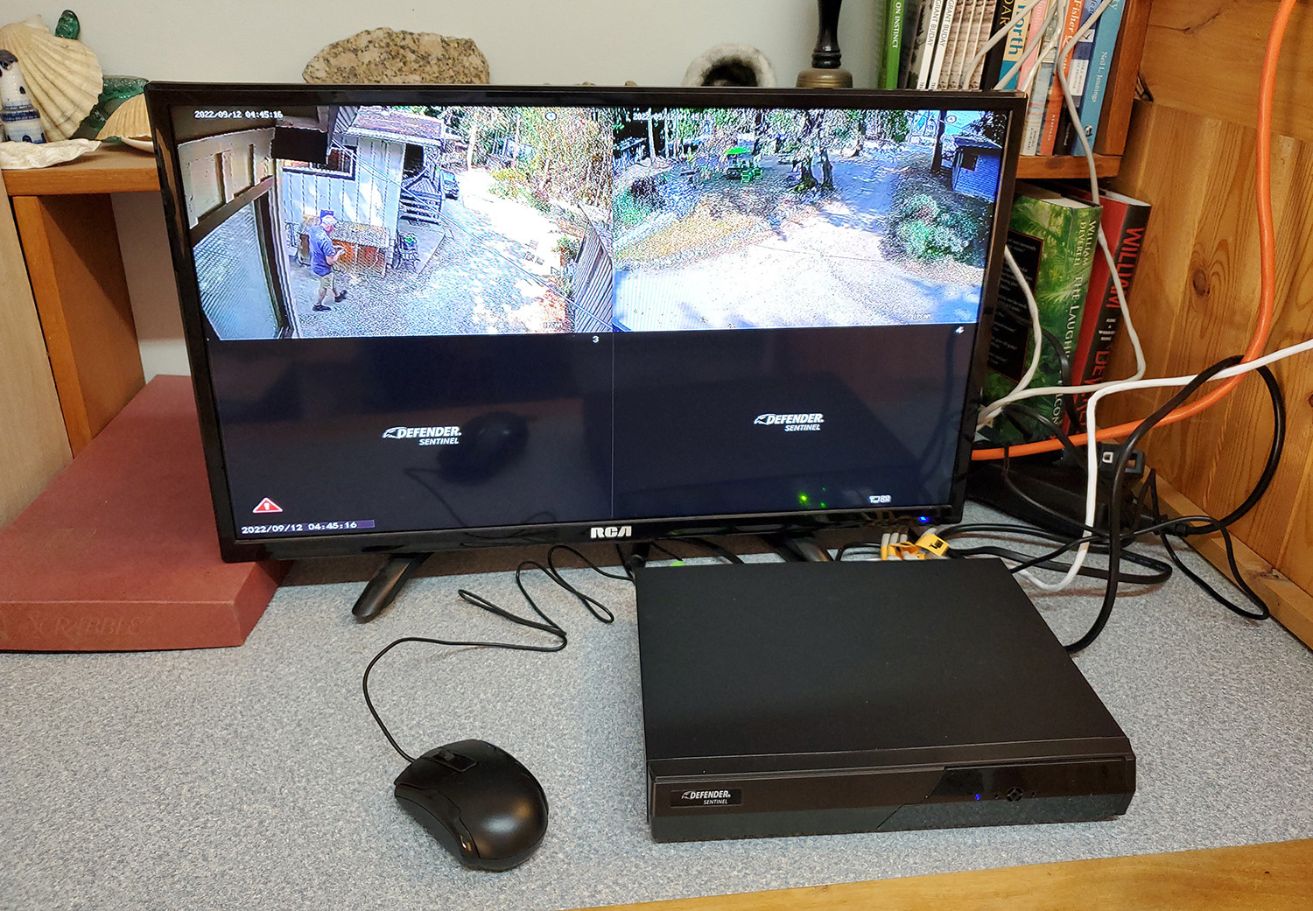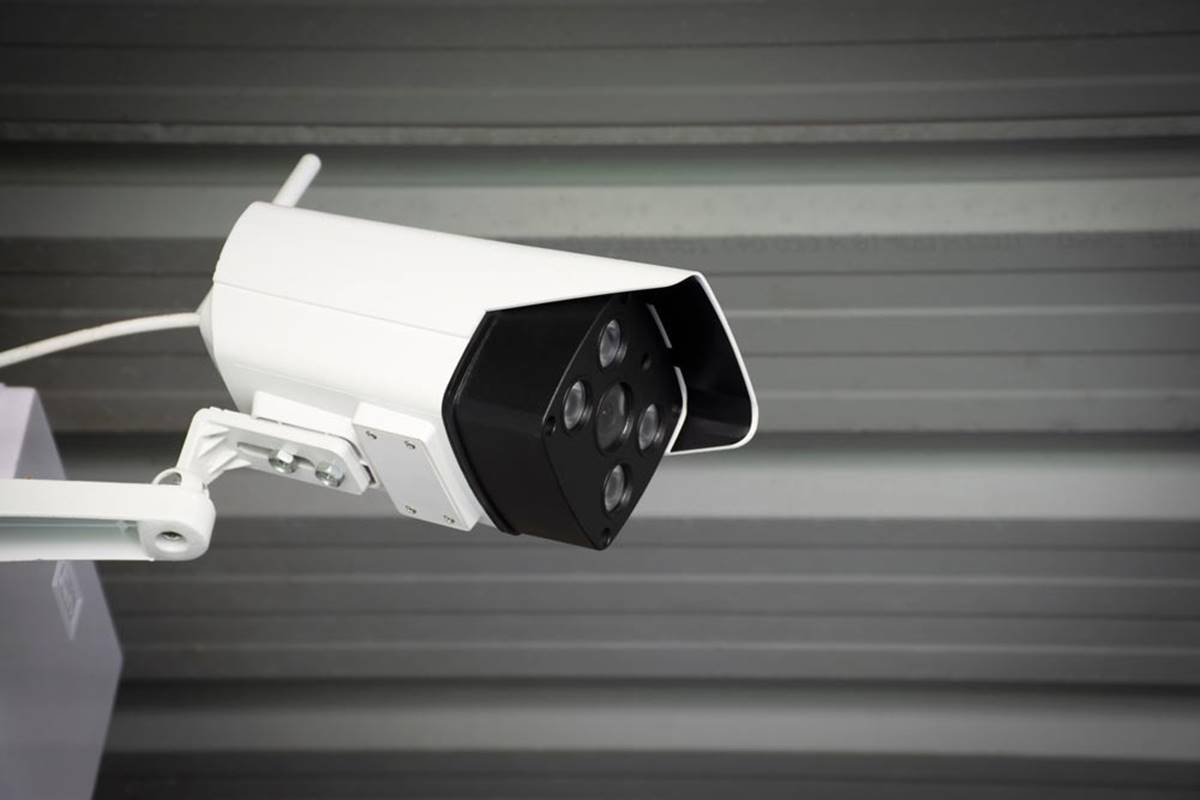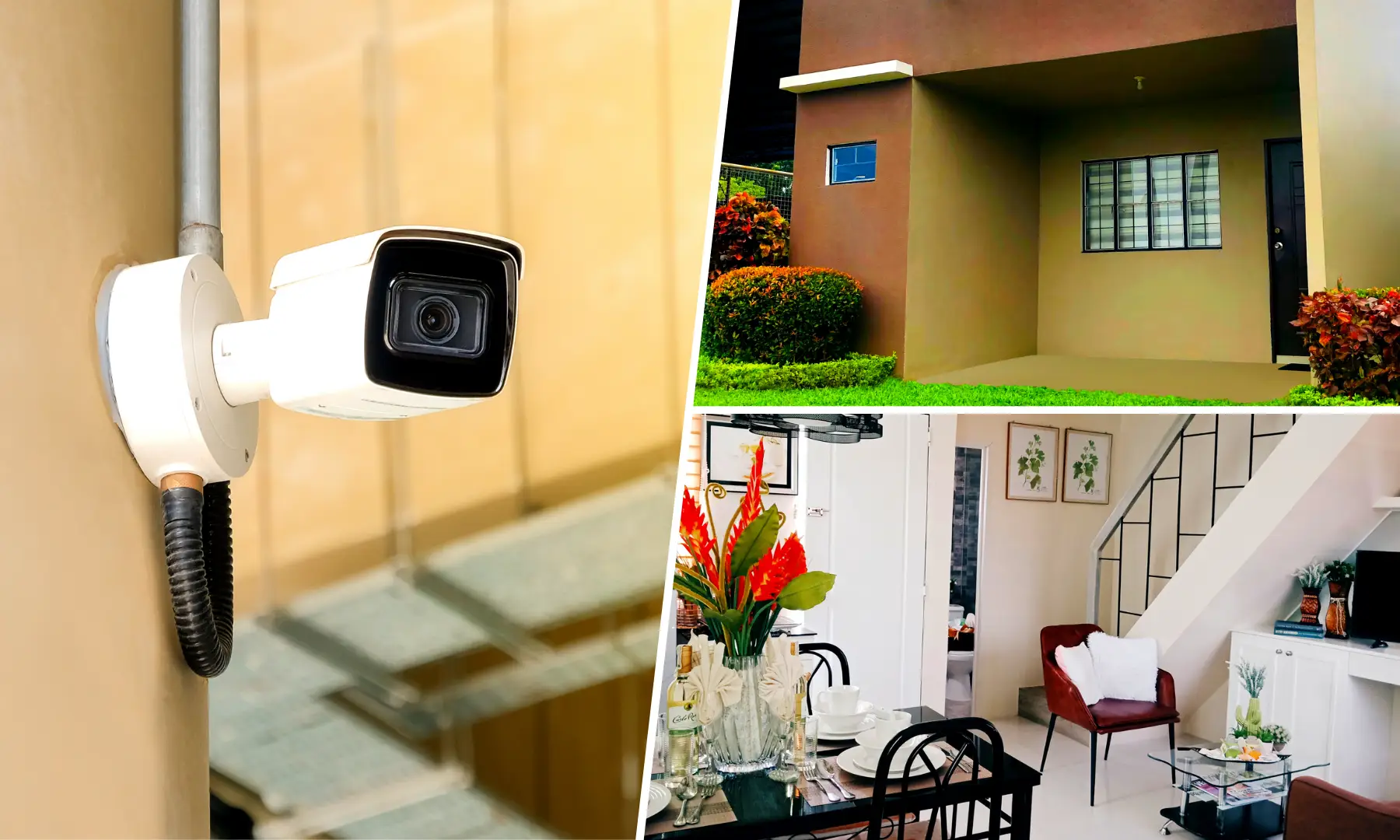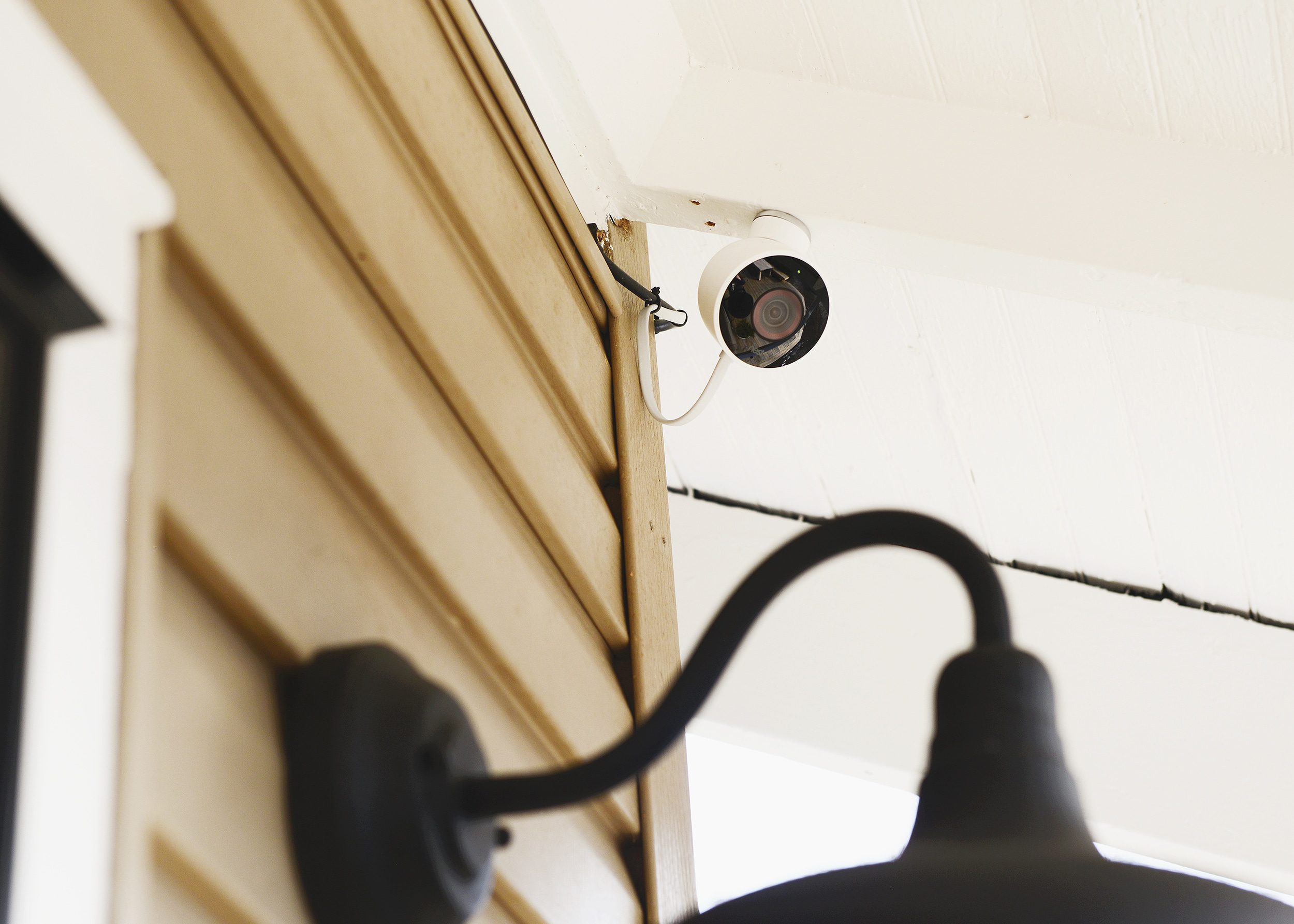Home>Home Security and Surveillance>What Is An Analog Security Camera
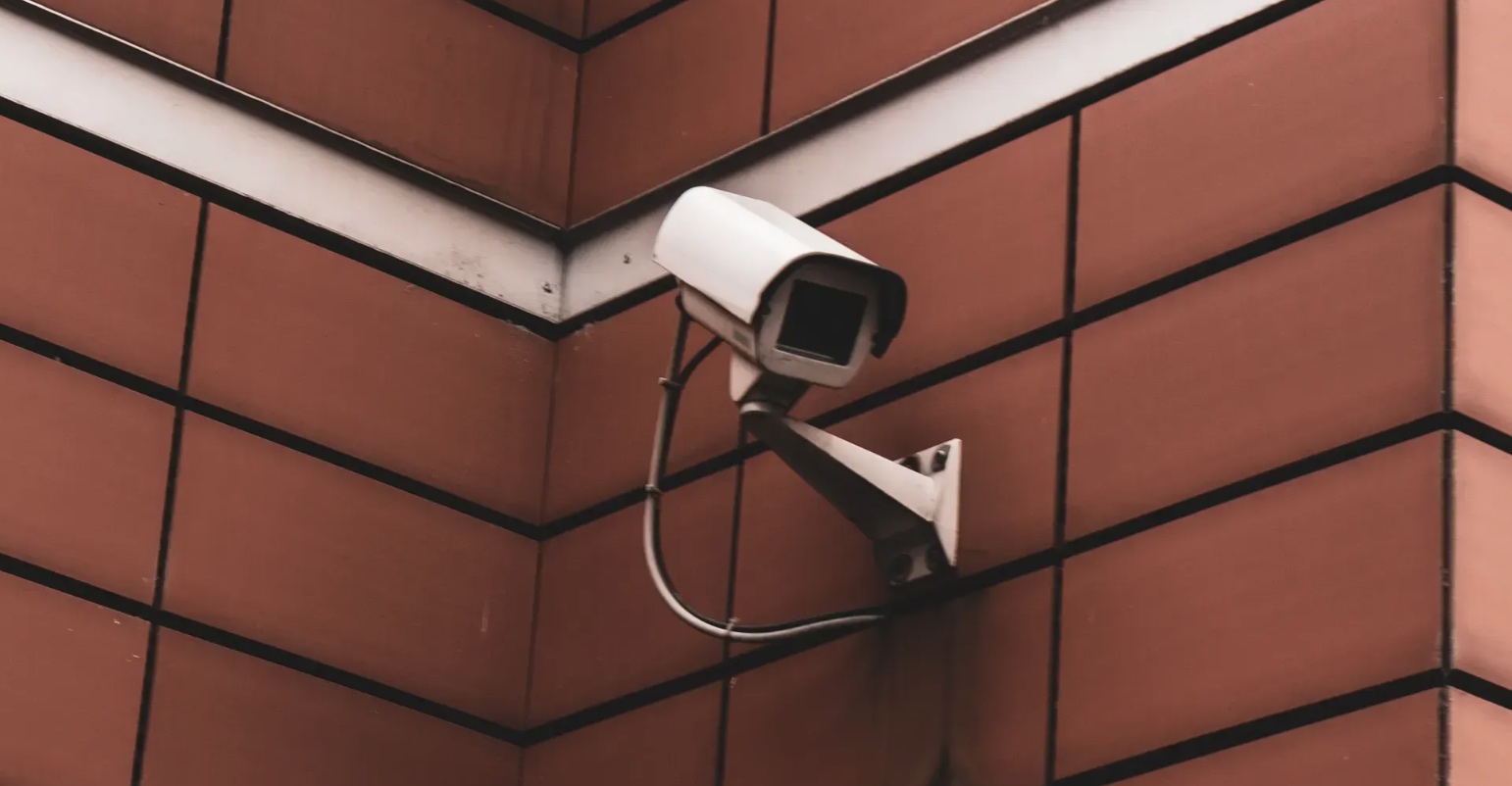

Home Security and Surveillance
What Is An Analog Security Camera
Modified: October 20, 2024
Discover what an analog security camera is and how it can enhance your home security and surveillance. Explore the benefits and features of this reliable option.
(Many of the links in this article redirect to a specific reviewed product. Your purchase of these products through affiliate links helps to generate commission for Storables.com, at no extra cost. Learn more)
Introduction
Welcome to the world of home security and surveillance! In today’s fast-paced and increasingly interconnected world, ensuring the safety of our homes and loved ones has become a top priority for many. One of the most effective ways to safeguard your property is by utilizing a reliable security camera system.
In this article, we will delve into the fascinating realm of analog security cameras, exploring their definition, functionality, advantages, and drawbacks. We will also compare analog cameras to their digital counterparts and provide insights into popular analog camera brands. Additionally, we will discuss the various applications of analog cameras and offer guidance on how to choose the best one for your specific needs.
So, without further ado, let’s embark on this journey and discover the wonders of analog security cameras!
Key Takeaways:
- Analog security cameras, like CCTV cameras, use electrical signals to transmit video footage. They are cost-effective, reliable, and offer various types for different applications, making them a popular choice for home security.
- While analog security cameras have limitations such as lower resolution and limited flexibility, they are still a viable option for basic surveillance needs. However, advancements in digital camera technology offer higher resolution, advanced features, and greater flexibility.
Read also: 10 Best Analog Security Cameras For 2025
Definition of an Analog Security Camera
Analog security cameras, also known as CCTV (closed-circuit television) cameras, have been a staple in the surveillance industry for decades. These cameras capture and record video footage using an analog signal transmission. Unlike digital cameras, which encode and transmit data in a digital format, analog cameras rely on continuous electrical signals to transmit the video feed.
Analog cameras consist of several key components that work together to capture and deliver video footage. The essential elements include a lens, an image sensor, and a signal processor. The lens captures light, which is then converted into an electrical signal by the image sensor. The signal processor enhances the signal and transmits it through coaxial cables to a recording device or monitor.
It’s important to note that analog cameras require a physical connection between the camera and the recording device or monitor. This connection is typically established using coaxial cables or twisted pair cables, such as Ethernet cables. This direct connection ensures a secure and reliable transmission of the video signal.
As technology has advanced, analog cameras have evolved to offer higher-resolution video and improved features. Initially, analog cameras produced low-resolution images, but with the introduction of advanced image sensors and signal processing technologies, they now offer resolutions up to 4K Ultra HD.
Analog cameras are available in various types, including dome cameras, bullet cameras, PTZ (pan-tilt-zoom) cameras, and covert cameras. Each type is designed for specific applications and environments, offering different features and functionalities.
Overall, analog security cameras provide a cost-effective and reliable solution for home security and surveillance. They offer a straightforward setup process and can be easily integrated with existing analog camera systems. However, with the advent of digital security cameras, the landscape of home surveillance is changing. In the following sections, we will explore the differences between analog and digital cameras and highlight the advantages and drawbacks of analog security cameras.
How Analog Security Cameras Work
Understanding how analog security cameras work is essential to grasp their functionality and capabilities. As mentioned earlier, analog cameras capture and transmit video footage using analog signals. Let’s take a closer look at the process:
1. Image Capture: An analog security camera contains a lens that focuses light onto an image sensor. The image sensor converts the incoming light into an electrical signal, which represents the video image captured by the camera. The size and quality of the image sensor significantly impact the clarity and resolution of the video footage.
2. Signal Processing: Once the image sensor has converted the captured image into an electrical signal, it undergoes further processing. The signal processor within the camera enhances the signal, adjusting factors such as contrast, brightness, and color balance. This processing helps to improve the overall quality of the video feed.
3. Transmission: After the signal processing is complete, the analog camera transmits the video feed through coaxial cables or twisted pair cables to a recording device or monitor. The cables carry the analog signals, ensuring a direct and continuous connection between the camera and recording device or monitor. It’s worth noting that the maximum transmission distance for analog cameras is usually limited compared to digital cameras.
4. Display or Recording: The video signals received by the recording device or monitor are then displayed or recorded for later retrieval. Analog cameras can be connected to various recording devices, such as a digital video recorder (DVR) or a video management system (VMS). These devices store the video footage on a physical storage medium, like a hard drive, for future reference or analysis.
It is important to understand that analog cameras work in real-time, providing live video footage that can be viewed directly on a monitor or recorded for later playback. However, analog cameras do not have the ability to transmit footage over the internet or connect to a network without additional equipment.
In recent years, technological advancements have resulted in the development of analog high-definition (HD) cameras, capable of capturing video at resolutions up to 4K Ultra HD. These cameras leverage advanced image sensors and signal processing algorithms to deliver sharper and more detailed video footage.
In the next sections, we will discuss the advantages and drawbacks of analog security cameras compared to their digital counterparts. This comparison will help you make an informed decision when choosing the right security camera system for your home or business.
Advantages of Analog Security Cameras
Analog security cameras have several advantages that make them a popular choice for home security and surveillance. Let’s explore some of these advantages:
- Cost-Effective: One major advantage of analog security cameras is their affordability. Analog camera systems tend to be cheaper compared to digital camera systems. This makes them an attractive option for homeowners and small businesses working with a limited budget.
- Familiarity: Analog cameras have been around for decades and have a well-established presence in the security industry. Many security professionals and installers are familiar with analog camera systems, making installation and maintenance easier.
- Compatibility: Analog cameras are often backward-compatible with existing analog systems. If you have an older analog camera system in place, adding additional analog cameras to expand your surveillance coverage is relatively simple.
- Reliability: Analog cameras deliver a live video feed with minimal latency. This real-time monitoring can be crucial for certain situations, such as monitoring entryways or high-risk areas. The direct analog signal transmission also ensures a stable connection without the risk of network interruptions.
- Wide Range of Options: Analog cameras come in various types and styles, including dome cameras, bullet cameras, and PTZ cameras. This wide range allows for flexibility in choosing the form factor and features that best suit your surveillance needs.
- Privacy and Cybersecurity: Since analog cameras do not connect to the internet or a network, they eliminate the privacy and cybersecurity concerns that are often associated with digital cameras. This can provide peace of mind for those worried about potential hacking or unauthorized access to their surveillance system.
It is important to note that while analog security cameras offer many advantages, they also have some limitations. In the next section, we will explore the drawbacks of analog cameras and compare them to digital security cameras.
Drawbacks of Analog Security Cameras
While analog security cameras have their advantages, they are not without their drawbacks. It’s important to consider these limitations before making a decision. Let’s explore some of the drawbacks of analog security cameras:
- Limited Resolution: Analog cameras generally offer lower resolution compared to their digital counterparts. Although modern analog cameras can provide high-definition (HD) video footage, they still fall short in terms of capturing the fine details and clarity of digital cameras.
- Less Flexibility: Analog cameras require physical connections through cables. This limits the flexibility and scalability of the surveillance system, especially when it comes to covering large areas or installing cameras in remote locations. Digital cameras, on the other hand, offer wireless and network-based options for greater flexibility.
- Difficulty in Video Retrieval: Retrieving and managing video footage from analog cameras can be more challenging compared to digital cameras. Analog cameras often require manual search and playback of recorded tapes or physically removing storage devices for playback, which can be time-consuming and less efficient.
- Inability to Integrate with Advanced Technologies: Analog cameras lack the capabilities for advanced features and integration with modern technologies. Unlike digital cameras, they cannot support features like facial recognition, license plate recognition, or advanced analytics. This may limit the effectiveness and functionality of the surveillance system.
- Signal Loss and Quality Degradation: Analog cameras transmit electrical signals over physical cables, which are susceptible to signal loss and degradation over long distances. As a result, the video quality may suffer, and the maximum transmission distance for analog cameras is typically limited compared to digital cameras.
- Lack of Remote Access: Analog cameras do not have built-in connectivity for remote access over the internet. This means that you cannot view the live feed or access recorded footage remotely without additional equipment or configurations.
While analog cameras have their drawbacks, it’s important to consider your specific security needs and budget constraints when deciding on a surveillance system. In some cases, analog cameras may still be a viable and cost-effective option. However, with the advancements in digital camera technology, it’s worth considering the benefits and capabilities of digital security cameras as well.
Analog security cameras capture and transmit video signals in a continuous stream. They are a cost-effective option for basic surveillance needs, but may not offer the same level of image quality and features as digital cameras.
Read more: What Is Security Camera
Analog vs. Digital Security Cameras: A Comparison
When it comes to home security and surveillance, you have two main options: analog cameras and digital cameras. Both types have their own unique features and advantages. Let’s compare analog and digital security cameras to help you make an informed decision:
- Resolution: Digital cameras offer higher resolution compared to analog cameras. Digital cameras can capture and display video footage in high-definition (HD) and even ultra-high-definition (UHD) resolutions, allowing for greater detail and clarity.
- Flexibility: Digital cameras offer more flexibility in terms of installation options. They can be connected wirelessly or through a network, providing the ability to install cameras in remote locations or areas where running cables is not feasible. Analog cameras, on the other hand, require physical connections through cables, limiting their flexibility.
- Advanced Features: Digital cameras often come with advanced features such as motion detection, facial recognition, and object tracking. These features enhance the overall security and functionality of the surveillance system, allowing for more accurate monitoring and analysis. Analog cameras, while reliable, lack these advanced features.
- Video Storage: Digital cameras can store video footage digitally on various storage media, such as cloud storage or network-attached storage (NAS) devices. This makes video retrieval and management more convenient and efficient. Analog cameras typically require manual search and playback of recorded tapes or physical storage devices, which can be time-consuming.
- Remote Access: Digital cameras provide the ability to remotely access live video feeds and recorded footage over the internet. This allows you to monitor your property from anywhere, using a computer, smartphone, or tablet. Analog cameras require additional equipment or configurations to enable remote access.
- Cost: Analog cameras are generally more cost-effective compared to digital cameras. They offer a budget-friendly option for those looking to set up a basic surveillance system without advanced features. Digital cameras, on the other hand, can be more expensive due to their advanced technology and capabilities.
Ultimately, the choice between analog and digital cameras depends on your specific needs, budget, and the level of security you require. If you prioritize high-resolution footage, advanced features, and flexibility, digital cameras may be the better choice. However, if you’re working with a limited budget and need a simple and reliable surveillance solution, analog cameras can still deliver effective results.
Now that we’ve explored the differences between analog and digital security cameras, let’s move on to some popular analog security camera brands that you may consider for your home or business.
Popular Analog Security Camera Brands
When it comes to choosing an analog security camera system, there are several reputable brands known for their high-quality products and reliable performance. Let’s take a look at some of the popular analog security camera brands:
- Hikvision: Hikvision is a leading manufacturer of surveillance solutions, offering a wide range of analog cameras with advanced features. Their cameras are known for their high-resolution video capture, wide dynamic range (WDR) technology, and excellent low-light performance.
- Axis Communications: Axis Communications is known for its innovative and high-performance surveillance products. They offer a range of analog cameras with features such as remote zoom and focus capabilities, built-in analytics, and superior video quality.
- Dahua Technology: Dahua Technology is a global leader in the security industry, specializing in video surveillance solutions. Their analog camera lineup includes various options, including dome cameras, bullet cameras, and PTZ cameras, known for their reliability and image quality.
- Pelco: Pelco has been in the security industry for over 50 years and has built a solid reputation for its analog camera systems. Their cameras are known for their durability, flexibility, and ease of integration with existing surveillance infrastructure.
- Bosch: Bosch offers a wide range of analog cameras designed for various environments and applications. They prioritize image quality, reliability, and advanced features such as intelligent video analysis and built-in video analytics.
- Panasonic: Panasonic is a well-known brand that produces high-quality analog cameras suitable for home and business surveillance. Their cameras offer exceptional video quality, advanced image processing, and a range of features for enhanced security.
These are just a few of the popular analog security camera brands available on the market. It’s important to research each brand, compare their offerings, and consider your specific surveillance needs before making a decision.
In the next section, we will explore the common applications of analog security cameras to help you determine their potential use in your home or business.
Common Applications of Analog Security Cameras
Analog security cameras have a wide range of applications and can be utilized in various settings to enhance security and surveillance. Let’s explore some of the common applications of analog security cameras:
- Residential Security: Analog security cameras are commonly used in residential settings to protect homes and properties. They can monitor entry points, deter burglars, and provide evidence in the event of a break-in or vandalism.
- Commercial Security: Analog security cameras are extensively used in commercial establishments such as offices, retail stores, and warehouses. They help deter theft, monitor employee behavior, and ensure the safety of customers and staff.
- Industrial Surveillance: Analog cameras are crucial for monitoring industrial areas, manufacturing facilities, and construction sites. They can help prevent unauthorized access, monitor equipment and machinery, and ensure a safe working environment.
- Public Areas: Analog cameras are often installed in public areas like parks, parking lots, and transportation stations to enhance public safety and monitor for any suspicious activities or incidents.
- Educational Institutions: Analog security cameras are widely used in schools, colleges, and universities to ensure the safety of students, staff, and visitors. They can help monitor entrances, hallways, and parking lots to detect any potential threats.
- Healthcare Facilities: Analog cameras play a crucial role in healthcare facilities such as hospitals and clinics. They help monitor patient rooms, entrances, and parking areas, ensuring the safety and security of patients, staff, and visitors.
- Government and Municipal Buildings: Analog cameras are often employed in government offices, courthouses, and municipal buildings to protect sensitive information, ensure public safety, and monitor for any security breaches.
These are just a few examples of the common applications of analog security cameras. Their versatility and reliability make them suitable for a wide range of security and surveillance needs. It’s important to assess your specific requirements and consult with a security professional to determine the most effective camera placement and system configuration for your intended use.
In the next section, we will highlight some important factors to consider when choosing an analog security camera for your home or business.
Factors to Consider When Choosing an Analog Security Camera
When selecting an analog security camera for your home or business, it’s important to consider several key factors to ensure you choose the right camera that meets your specific needs. Here are some factors to consider:
- Resolution: Consider the resolution requirements based on the level of detail you need in your surveillance footage. Higher resolution cameras capture more detailed images, which can be crucial for identifying faces or reading license plates.
- Camera Type: Determine the type of camera that suits your requirements. Dome cameras are discreet and versatile, suitable for indoor use. Bullet cameras are more visible and can be used for both indoor and outdoor surveillance. PTZ cameras offer pan, tilt, and zoom capabilities, providing greater coverage and flexibility.
- Indoor or Outdoor Use: Consider whether you need cameras specifically designed for outdoor use. Outdoor cameras should be weatherproof and equipped to handle harsh environmental conditions.
- Field of View: Determine the desired field of view for your surveillance area. Wide-angle lenses offer a broader view but may sacrifice detail, while narrow-angle lenses focus on specific areas with greater detail.
- Low Light Performance: If you need surveillance in low-light conditions, look for cameras with low light performance features such as infrared (IR) capabilities or wide dynamic range (WDR) technology. These features improve visibility and image quality in challenging lighting conditions.
- Connectivity and Compatibility: Consider how you plan to connect and monitor the cameras. Analog cameras usually require a direct physical connection to a recording device. Ensure compatibility with the recording device or video management software (VMS) you plan to use.
- Storage: Determine the amount of storage needed to store your video footage. Consider whether you prefer local storage through a digital video recorder (DVR) or cloud storage options for convenient access to your footage from anywhere.
- Budget: Set a budget for your security camera system and find cameras that offer a good balance of features, quality, and affordability within your budget.
Additionally, it’s important to assess your specific security needs, such as the size of the area you need to surveil, any specific security threats or risks, and any legal requirements or regulations that may impact your camera selection.
Taking the time to evaluate these factors will help you choose the best analog security camera system that meets your requirements and provides optimal security and surveillance for your home or business.
Now that we have highlighted the important factors to consider, let’s conclude our journey through the realm of analog security cameras.
Read more: What Are Security Cameras
Conclusion
Choosing the right security camera system is crucial for safeguarding your home or business. Analog security cameras have been a reliable and cost-effective solution in the surveillance industry for many years. Understanding their definition, functionality, advantages, and drawbacks is essential in making an informed decision.
We explored how analog security cameras work, with their image capture, signal processing, transmission, and display or recording functions. We discussed the advantages of analog cameras, such as their affordability, familiarity, compatibility, reliability, and a wide range of options. However, we also highlighted the drawbacks of analog cameras, including their limited resolution, lack of flexibility, and the difficulty in video retrieval.
In comparing analog cameras to digital cameras, we found that digital cameras offer higher resolution, advanced features, flexibility, remote access capabilities, and more convenient video storage options. However, analog cameras still have their place in certain applications and come with a lower price tag.
We also explored popular analog security camera brands, including Hikvision, Axis Communications, Dahua Technology, Pelco, Bosch, and Panasonic, known for their quality and performance in the security industry.
Lastly, we emphasized the common applications of analog security cameras, such as residential and commercial security, industrial surveillance, public areas, educational institutions, healthcare facilities, and government buildings.
To ensure you choose the right analog security camera, we provided factors to consider, including resolution, camera type, indoor or outdoor use, field of view, low light performance, connectivity, storage options, and budget.
In conclusion, analog security cameras continue to be a viable and cost-effective option for home security and surveillance. However, with the advancements in digital camera technology, it is essential to weigh the advantages and drawbacks of both types when making your decision.
Remember to carefully assess your specific security needs, consider the environment in which the cameras will be deployed, and consult with professionals or experts in the field to ensure you choose the best analog security camera system for your unique requirements.
Now armed with this knowledge, you can confidently take the next step in enhancing the security and surveillance of your home or business.
Frequently Asked Questions about What Is An Analog Security Camera
Was this page helpful?
At Storables.com, we guarantee accurate and reliable information. Our content, validated by Expert Board Contributors, is crafted following stringent Editorial Policies. We're committed to providing you with well-researched, expert-backed insights for all your informational needs.
